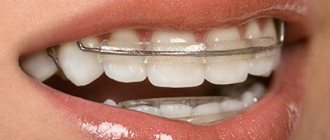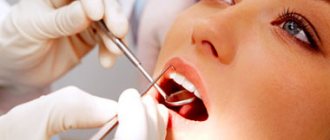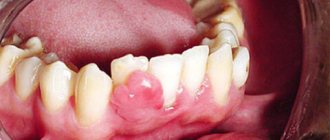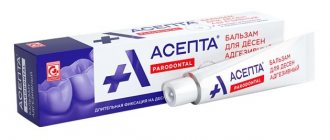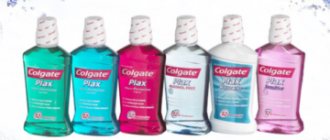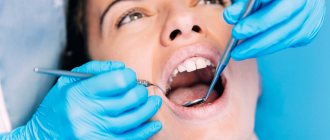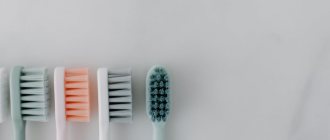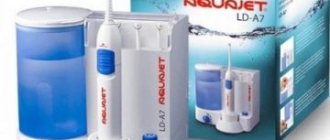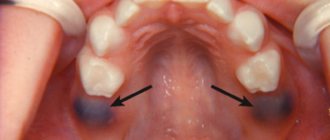For gum inflammation, doctors recommend a comprehensive approach to treatment. One effective option is the use of collagen plates, such as those produced by Farmadont. This product is unique and has no analogues; it contains collagen and natural plant components. According to patient reviews, positive dynamics are observed after the course of treatment. The plates are approved for use at any age. We will consider in more detail about the types and method of application below.
What are they needed for?
Dentists recommend using plates in the following cases:
- Gingivitis.
- Periodontitis.
- Bleeding gums.
- Periodontal disease.
- Injuries and damage to gums.
- Recent surgery, such as tooth extraction or implantation. Active components allow you to speed up the process of tissue regeneration.
The only contraindications can be identified as an allergic reaction. It is manifested by severe itching and increased swelling. In this case, you should thoroughly rinse your mouth with an antiseptic solution and stop treatment with Farmadont. Carefully study the composition before using the plates. Before use, consultation with a specialist is recommended.
In what specific cases is gingivoplasty needed?
When preparing for implantation, the following indications for gum augmentation may be identified:
- Loss of soft tissue caused by bone resorption in the area of a long-term missing tooth.
- Severe gum detachment resulting from periodontitis.
- Defects in the mucous membranes resulting from trauma to this area.
A sufficient volume of soft tissue during implantation is very important. It helps not only to qualitatively install an artificial root, but also to form an aesthetic gingival cuff around it. In addition, if the mucous membranes are in good condition, this contributes to normal nutrition of the bone structures. An implant that is tightly covered by the gum holds in the socket more firmly and is better protected from the penetration of bacteria. Therefore, the dental surgeon always investigates at the preparatory stage whether gum augmentation is necessary for implantation. And if such a need is identified, gingivoplasty is planned.
How to use it correctly
The plates are very easy to use:
- First, carry out a complete hygienic treatment of the oral cavity. Brush your teeth with toothpaste and a brush, use dental floss, mouthwash and irrigator.
- Wash your hands thoroughly with soap. Lightly massage your gums using your fingertips for 2-3 minutes.
- Then take the packaging and remove the plate.
- Remove the protective film and apply the product to the gum, firmly fixing and straightening the plate with your fingers.
- Close your jaws and wait for complete dissolution. It usually takes about 10 minutes, after which the plate dissolves on its own.
After the procedure, it is not recommended to eat or drink water for 1.5 hours. Depending on the specific diagnosis and severity of the pathological process, the doctor can establish an individual course of treatment. It is usually recommended to use the drug twice a day for 7-10 days. It is convenient to use the plates at night, in which case the therapeutic effect remains for a longer time.
The drug for the treatment of gums is affordable; it can be found in almost any pharmacy. The price is very reasonable; on average, a pack of plates (24 pieces) does not exceed 400 rubles.
How is gum augmentation performed?
The method of performing the operation is chosen by the doctor. To do this, the specialist first evaluates parameters such as the width and thickness of the gums. To restore its volume, patient tissue taken from the area of the extracted tooth or a palatal flap can be used. Along with this, artificial materials are also used, which are considered a progressive means of restoring the soft tissues of the oral cavity. These are collagen matrices or membranes.
Stages of gum growth:
- Antiseptic treatment of the oral cavity. If necessary, the manipulation area is isolated.
- Carrying out infiltration or conduction type anesthesia. For this purpose, injections of painkillers are used.
- Gum plastic surgery. If surgery is performed before the root replacement is installed, tissue incisions are made. When two operations are performed simultaneously, there is no need for additional dissections of the gums.
- Stitching. The edges of the cut fabrics are connected and sutured.
The entire operation takes 40–60 minutes. If collagen membranes are used for extensions, the time for plastic surgery is reduced by approximately three times.
When can and cannot be used Mucograft?
I really like one of A. C. Clark's laws, which states that:
Over the course of ten years of working with the Geistlich Mucograft collagen matrix, we have tried to find the limits of its capabilities and thus form a range of indications for its use. And this is what we got:
Vestibuloplasty (deepening of the vestibule of the oral cavity)
The operation described in this article is the main reason for using Mucograft collagen matrices.
We use 98 out of 100 packages of Mucograft for vestibuloplasty in the area of teeth and/or implants:
The relevance of using collagen matrices increases during extensive and extended operations, while for minor (within 1-2 teeth) traumatic interventions, its use is not advisable from a financial point of view - the operation turns out to be too expensive.
Gum recession plastic surgery
The Geistlich Pharma company claims that plastic surgery for gum recession is one of the indications for the use of Mucograft collagen matrices. I find this statement not only controversial, but even contrary to the properties of the specified material. And that's why.
Firstly, when performing gum plastic surgery using the coronal flap displacement method (as, in fact, any other method), the use of a free connective tissue graft (CTG) is intended to change the thickness (biotype) of the gum adjacent to the tooth root. Mucograft is not capable of changing the biotype; its purpose is completely different - to increase the width.
Secondly, Mucograft does not in any way contribute to the “fusion” of the displaced mucosa with the tooth root. In my opinion, all those clinical problems where Mucograft was used to correct gum recession could have been solved without it - the result would have been exactly the same, and perhaps even better.
Thirdly, plastic surgery for gum recession in the area of one tooth is a trivial and very cheap operation. The use of a collagen matrix increases its cost at least twice. And if from a medical point of view the use of Mucograft is controversial, then from a financial point of view it is categorically not advisable.
Of course, if the doctor has a mortgage and a car loan, then you can use Mucograft everywhere and in any conditions, but if instead of a credit BMW and a mortgaged two-room apartment in Zilart, the dentist has a mind, then he will refuse to use collagen matrices for plastic surgery of single recessions.
In other words, I would caution against attempting to use Mucograft to repair gum recession. If only because I did not see good results in the long term (more than 5-10 years).
Preservation of the hole
You can read more about this operation here>>
I have no questions about the use of collagen matrices for graft isolation during socket preservation after extraction. In all respects, this does not contradict either common sense or the declared properties of Mucograft:
The need for such intervention raises much more questions for me - in my opinion, currently the indications for it are excessive and in most cases not justified. To specify them, you need to at least minimally understand the mechanisms of development of the atrophic process - but who delves into this? (((….
Closing perforation of the maxillary sinus mucosa during sinus lift
This version of the “non-canonical” use of Mucograft is described here>> or here>>, in an article devoted to complications of sinus lifting. I recommend reading it.
From the point of view of the known properties of collagen matrices and what we know about the microflora and structure of the maxillary sinuses, I find the use of Mucograft Seal to close perforations during sinus lifting not only justified, but expedient both from a medical and financial point of view (Mucograft Seal is cheaper any Geistlich barrier membrane).
Moreover, such tactics work in the case of very large perforations, when the Schneiderian membrane “tears into a British flag.” You just need to take a larger Mucograft.
Dental plates for children
Having looked at the photos before and after wearing dental plates on children’s teeth, you will conclude that they are very effective - and you will be right. With the right approach, they can be called the best way to correct a number of malocclusions. Their use is advisable under the age of 12 years during active jaw growth. To correct serious anomalies, non-removable structures are used. If there is a slight curvature or prevention is required, removable plates are ideal. As already mentioned, the production of plates is carried out on an individual basis and requires taking impressions and making plaster models. It is very important that the surface relief of the gums and palate coincide exactly. To do this, a special adjustment is carried out, which takes no more than 10 minutes.
Benefits of Teeth Whitening Strips
Whitening strips are a unique solution for self-whitening teeth enamel at home. Most people have associated going to the dentist with pain and discomfort since childhood. If you look at the financial side of the issue, teeth whitening at home requires significantly less money than going to a dental clinic.
The main advantages of using whitening strips:
- the ability to carry out this procedure at home, while doing normal household chores;
- rapid achievement of results - the effect appears a few days after the start of bleaching;
- safety for tooth enamel and oral cavity;
- comparative durability of the effect – 6-12 months;
- painlessness – does not cause discomfort or unpleasant sensations;
- high availability and low cost.
Installation of plates
Installing the plates is a fairly quick, painless process that takes no more than 10 minutes. Most of the time is spent on final adjustment of the system. That is why the first installation of removable plates is carried out in the presence of the attending physician. The doctor will give detailed instructions on the rules for its use, care and how to properly regulate the tension of the arc. The first correction is carried out after the appearance of a visible result - it is this that determines the subsequent course of treatment and its duration. It is important to understand that at first the plate will be perceived as a foreign body in the mouth, which can cause discomfort, impaired diction and increased salivation. The adjustment period averages up to one week; after this the structure ceases to be felt.
How to care for the plates?
In order for the plate to serve the required time and not break, it is necessary to provide it with appropriate care. It is as follows:
- brushing with toothpaste every day;
- disinfection every week;
- storage in a special container, closed;
- oiling the screw;
- removing the plate while eating, brushing teeth, practicing martial arts, boxing and water sports.
Do you dream of beautiful teeth? Contact the orthodontists of the multidisciplinary clinic CELT!
Make an appointment through the application or by calling +7 +7 We work every day:
- Monday—Friday: 8.00—20.00
- Saturday: 8.00–18.00
- Sunday is a day off
The nearest metro and MCC stations to the clinic:
- Highway of Enthusiasts or Perovo
- Partisan
- Enthusiast Highway
Driving directions
Precautionary measures
- Never swallow the gel. Most whitening strips are coated with a chemical composition in which the active ingredient is hydrogen peroxide. It is a highly toxic substance that can cause soft tissue irritation and other problems. Therefore, be careful not to swallow the gel while you are gluing or removing the strips. At the same time, if you accidentally swallowed a small amount of peroxide, do not panic, it will not cause serious consequences (in small quantities).
- Stop the procedure if you feel pain or increased tooth sensitivity. The active substances contained in the whitening composition can cause discomfort in the teeth and gums. This usually happens if you use this whitening method too often or leave the strips on for too long. In addition, troubles can occur if you have caries or your teeth are hypersensitive to the substances that make up the gel. As soon as you notice something wrong, stop using the strips and contact your dentist for advice. A specialist will select more suitable procedures for you and help restore damaged enamel.
- It is advisable that you consult your doctor before you decide to undergo whitening. This cosmetic procedure has a rather serious impact on dental health, which is why it is not suitable for everyone. You may be better off sticking with in-office teeth cleanings.
- It is also advisable to consult a doctor if you decide to switch to strips from another manufacturer. Here you need to find out whether the new product is right for you.
Dental care
- If you want your teeth to be healthy and the whitening effect to last as long as possible, take proper care of your entire oral cavity. This should be done as often as possible, spending sufficient time brushing your teeth.
- Brush your teeth at least twice a day, for about two to three minutes.
- It is important to clean carefully so as not to damage the gums and enamel.
- To make the whitening effect more noticeable, use a special whitening paste, for example, ASEPTA PLUS GENTLE WHITENING. It not only cleanses the surface of pigment, but also prevents increased sensitivity of tooth enamel, and the calamus and eleutherococcus extracts included in the composition promote accelerated gum regeneration, prevent bleeding and inflammation.
- In addition to regular brushing, use mouthwash; it has a good antiseptic effect, which significantly improves the condition of your gums and teeth. The solutions contain natural ingredients that prevent inflammation of soft tissues and reduce sensitivity
- Rinse your teeth for at least 30 seconds, then spit out the liquid.
- If you think the rinse aid is too concentrated, dilute it with water according to the instructions.
- If you want to enhance the effect of the strips, use special whitening rinses.
- Don't give up on flossing. With its help, you can better remove food debris from your teeth, which will reduce the accumulation of soft plaque and reduce the likelihood of tartar formation. The procedure is quite simple:
- Tear off a piece of thread approximately the length of your arm.
- Wrap the ends of the thread around the middle or index fingers of your left and right hands.
- Gently lower the floss into the space between your teeth.
- When it reaches the surface of the gum, wrap the floss around one of your teeth and gently rub it over the surface of the tooth, moving up and down.
- Do this with each tooth.
- Try to exclude coloring drinks and food from your diet during the procedures, otherwise you will not soon notice the effect. Or you risk not getting it at all. Eliminate the following foods from your diet:
- Coffee, tea, wine;
- Colored lemonades;
- Berries: blueberries, blackberries, etc.
- Chocolate;
- Lemons and oranges, as well as other foods with high acidity.
- Visit your dentist regularly.
Sources:
- Report on determining/confirming the preventive properties of toothpaste “ASEPTA PLUS” GENTLE WHITENING” Author: doctor-researcher A.A. Leontyev, head Department of Preventive Dentistry, Doctor of Medical Sciences, Professor S.B. Ulitovsky First St. Petersburg State Medical University named after. acad. I.P. Pavlova, Department of Preventive Dentistry
- Clinical and laboratory assessment of the influence of domestic therapeutic and prophylactic toothpaste based on plant extracts on the condition of the oral cavity in patients with simple marginal gingivitis. Doctor of Medical Sciences, Professor Elovikova T.M.1, Candidate of Chemical Sciences, Associate Professor Ermishina E.Yu. 2, Doctor of Technical Sciences Associate Professor Belokonova N.A. 2 Department of Therapeutic Dentistry USMU1, Department of General Chemistry USMU2
- Report on the determination/confirmation of the preventive properties of personal oral hygiene products “ASEPTA PLUS” Remineralization doctor-researcher A.A. Leontyev, head Department of Preventive Dentistry, Doctor of Medical Sciences, Professor S.B. Ulitovsky First St. Petersburg State Medical University named after. acad. I.P. Pavlova, Department of Preventive Dentistry
- Clinical studies of antisensitive toothpaste “Asepta Sensitive” (A.A. Leontyev, O.V. Kalinina, S.B. Ulitovsky) A.A. LEONTIEV, dentist O.V. KALININA, dentist S.B. ULITOVSKY, Doctor of Medical Sciences, Prof. Department of Therapeutic Dentistry, St. Petersburg State Medical University named after. acad. I.P. Pavlova
- Report on determining/confirming the preventive properties of toothpaste “ASEPTA PLUS” COFFEE and TOBACCO Author: doctor-researcher A.A. Leontyev, head Department of Preventive Dentistry, Doctor of Medical Sciences, Professor S.B. Ulitovsky. First St. Petersburg State Medical University named after. acad. I.P. Pavlova, Department of Preventive Dentistry
- Report on determining/confirming the preventive properties of commercially produced personal oral hygiene products: Asepta toothpaste used in combination with Asepta mouthwash and Asepta gum balm Head. Department of PFS Doctor of Medical Sciences Professor S.B. Ulitovsky St. Petersburg State Medical University named after Academician I.P. Pavlova. Faculty of Dentistry. Department of Preventive Dentistry.
What are the disadvantages of dental plates?
The use of records has a number of limitations. First of all, they are due to the fact that the functionality of the plates does not allow them to move teeth. It only makes it possible to hold them in a certain position, which does not allow them to be used to correct serious anomalies. At the same time, it is worth noting that often the reason for the insufficient effectiveness of treatment is a reduction in the time of wearing the structure. As for other disadvantages, these include:
- the need for long-term use;
- a number of uncomfortable sensations during adaptation;
- minimal pressure compared to braces;
- age restrictions for use;
- the need for constant monitoring by parents (in the case of children).
